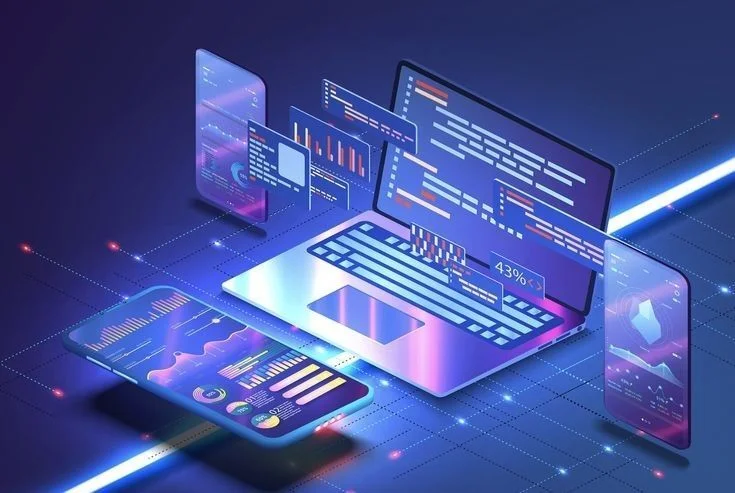

How to Become a Web Developer
Published: 2025-01-21 10:02:07
Want to become a web developer? In today’s digital world, web development is a highly in-demand career. Businesses need skilled developers to create websites and applications. Whether you're a beginner or switching careers, learning web development can open up great opportunities. This guide will help you understand the key skills, tools, and steps needed to start your journey. From coding to designing user-friendly websites, you'll learn everything to build a successful career. Start today and take your first step toward becoming a web developer!
Understanding the Role of a Web Developer
A web developer is a professional who specializes in the development of websites and web applications. Web developers are responsible for building, designing, and maintaining websites to ensure they are functional, visually appealing, and user-friendly.

Their role encompasses a variety of tasks, including writing code, designing layouts, optimizing performance, and ensuring the security of web applications. There are three main types of web developers, each with its own focus and specialization:
- Front-End Web Developer: A front-end developer works on the client side of the web, creating the visual aspects of a website that users interact with directly. They are responsible for the design, layout, structure, and interactivity of a website.
- Back-End Web Developer: A back-end developer works on the server side of web applications, handling the functionality that supports the front end. This includes databases, server management, APIs, and ensuring the web application runs efficiently.
- Full-Stack Web Developer: A full-stack developer has expertise in both front-end and back-end development. They can handle the entire web development process, from designing the user interface to managing the server-side components.
How to Become a Web Developer: Step-by-Step Guide
By mastering both frontend and backend technologies, you can join the ranks of skilled developers shaping the internet's future. Let’s explore how you can get started!
1. Choose Your Path
Before diving into web development, it’s important to determine which type of developer you want to become: a front-end, back-end, or full-stack developer. If you're unsure, you can start by learning the basics of both front-end and back-end technologies, and as you progress, you can specialize in one area based on your interests and strengths.
2. Learn the Fundamentals of Web Development
To understand how to become a web developer, you first need to get a solid grasp of the core technologies involved in web development. These include HTML, CSS, and JavaScript, which are the foundational building blocks of the web.
- HTML (HyperText Markup Language): HTML is the standard language used to create the structure of a web page. It defines the content and layout, including headings, paragraphs, images, links, and more.
- CSS (Cascading Style Sheets): CSS is used to style the visual appearance of HTML elements. It controls the colors, fonts, spacing, and layout of web pages, allowing you to create attractive and responsive designs.
- JavaScript: JavaScript is a programming language that adds interactivity to web pages. It enables dynamic content like animations, form validation, and interactive maps. JavaScript is a must-learn for any aspiring web developer, as it’s used across front-end and back-end development.
While HTML, CSS, and JavaScript are the essentials, aspiring web developers should also familiarize themselves with development tools such as code editors (e.g., Visual Studio Code), version control (e.g., Git), and web browsers for testing and debugging.
3. Master Front-End Development
Once you have a solid understanding of HTML, CSS, and JavaScript, it's time to delve into front-end development. As a front-end developer, you will be responsible for the part of the website that users interact with directly.
Here are some key skills and tools to learn:
- Responsive Design: With the growing use of mobile devices, it’s crucial to design websites that look good and function well on different screen sizes. Responsive design is achieved through CSS frameworks like Bootstrap or CSS Grid and Flexbox techniques.
- CSS Preprocessors: Tools like Sass or LESS enhance the functionality of CSS by providing features like variables, mixins, and nested rules. Learning these preprocessors can make your stylesheets more efficient and organized.
- JavaScript Frameworks and Libraries: To streamline development, it’s important to learn front-end JavaScript libraries and frameworks such as React, Vue.js, or Angular. These tools help you build interactive user interfaces quickly and efficiently.
- Version Control Systems: As a web developer, you will work with multiple versions of code. Familiarizing yourself with Git and platforms like GitHub or GitLab is essential for tracking code changes, collaborating with teams, and deploying your code.

4. Learn Back-End Development
As a back-end developer, you will be responsible for creating the logic, database management, and server-side components of a website. Understanding how to work with server-side technologies and databases is essential for web development.
Here are some key technologies you should focus on:
- Server-Side Languages: You should become proficient in at least one server-side language such as Node.js (JavaScript), PHP, Ruby, Python, or Java. Node.js is popular for full-stack development, allowing you to use JavaScript on both the front-end and back-end.
- Databases: Back-end development often involves working with databases to store and retrieve data. Learn both SQL (relational databases like MySQL and PostgreSQL) and NoSQL (non-relational databases like MongoDB) to manage data effectively.
- APIs: As a back-end developer, you’ll often work with APIs (Application Programming Interfaces) to enable communication between different systems. Learn how to create and consume APIs using technologies like REST and GraphQL.
- Server Management: Familiarize yourself with web servers like Apache or Nginx and hosting platforms like AWS or Heroku. Understanding how to deploy and manage web applications on these servers is crucial for back-end development.
5. Focus on Full-Stack Development
Full-stack development is the art of handling both the front-end and back-end aspects of web development. To become a full-stack web developer, you need to master both front-end and back-end technologies and learn how to integrate them seamlessly.
If you’re working with a stack like MERN (MongoDB, Express.js, React, Node.js), you’ll learn how to manage both the client-side (React) and server-side (Node.js and Express.js) in one unified environment. MEAN (MongoDB, Express.js, Angular, Node.js) and LAMP (Linux, Apache, MySQL, PHP) are other common full-stack development stacks.
Being a full-stack developer gives you flexibility and the ability to build complete web applications from scratch. It also makes you highly valuable to employers, as you can handle all aspects of web development.
6. Develop Problem-Solving and Debugging Skills
Web development is not just about writing code; it’s about solving problems. As a web developer, you will face bugs and challenges that require creative solutions. Debugging skills are crucial in identifying and fixing issues in your code.
Learn how to use debugging tools, browser developer tools, and frameworks that assist with testing and troubleshooting. Understanding the process of debugging and problem-solving will significantly improve your coding efficiency and the quality of your work.
7. Build a Portfolio
One of the best ways to showcase your web development skills is to build a strong portfolio. A portfolio demonstrates your capabilities and experience to potential employers or clients. Start by creating personal projects or contributing to open-source projects on platforms like GitHub.
As you progress in your learning journey, add projects to your portfolio that highlight your expertise in different areas of web development. You can build simple websites, complex web applications, e-commerce platforms, or anything that interests you. A well-curated portfolio will give you an edge in the competitive job market.
8. Stay Updated with Industry Trends
Web development is an ever-evolving field, with new tools, frameworks, and technologies emerging regularly. To stay competitive, it’s important to keep learning and adapting to new trends.

Follow web development blogs, join online communities, attend conferences, and participate in hackathons to stay informed about the latest advancements in the industry.
FAQs:
1. How do I become a web developer?
Learn HTML, CSS, and JavaScript. Gain skills in front-end and back-end development, build projects, take online courses, and earn certifications.
2. What are the job responsibilities of a web developer?
Web developers design, build, and maintain websites. They write code, ensure functionality, optimize performance, and fix bugs.
3. What is website development?
Website development is creating and maintaining websites using coding languages, frameworks, and databases for functionality and design.
4. What do web programmers do?
Web programmers write and test code to develop websites and web applications, ensuring performance, security, and user experience.
In summary, becoming a web developer requires dedication, continuous learning, and a strong understanding of both front-end and back-end technologies. By mastering the core skills and tools, building a portfolio, and staying updated on the latest trends, you can successfully launch a career as a web developer.
If you're wondering, "How to become a web developer?" just remember that the journey is about taking small, consistent steps. Whether you choose to specialize in front-end, back-end, or full-stack development, there’s a wealth of opportunities waiting for you in the world of web development.
With hard work, practice, and perseverance, you can develop the skills necessary to thrive in this dynamic and exciting field.
👉 Enroll Now and take the first step toward a successful web development career! Have questions? Contact Us—we’re here to help!
Learn more about web development here.
Dominate Modern Web Development: Top Reasons to Learn Redux Today
Top 5 Programming Languages to Learn in 2025 | Job-Oriented IT Courses
Full Stack Developer Salary in India: What You Can Earn in Tech


